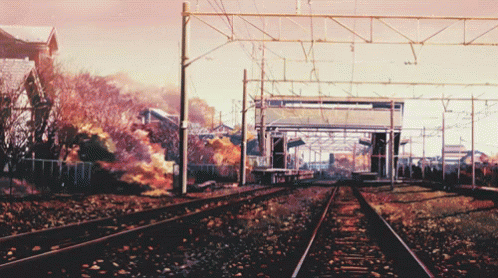I was a production designer working on award shows in television. We used a combination of led video and rear projection- rear projection being a much cheaper alternative. There were times when we had layers of video.
For a train layout, unless you have a huge amount of space, rear projection might be impractical. LED screens are very expensive which leaves you with front projection. The problems with FP are ambient light washing out the image and shadows cast from foreground objects.
In theatrical and television stage shows, the lighting is very controlled and targeted. Follow spots are a principal light source on the talent. So you would have to carefully light the layout and trains themselves with pin spots, or ideally theatrical spots that can be shuttered to keep light off the backdrop. (Unless you simply wanted night scenes). To avoid shadows, the projectors would have to be high and shoot down, and the resulting keystoning (distortion) would have to be corrected. If you wanted a wide backdrop, it would require multiple projectors and you would need software to stitch it together into a seamless backdrop.
Doable, but requires an entirely unique and complex set of skills that are outside the realm of the average hobbyist- which is why the example shown is a layout owned by a Porsche heir. ( I should point out that I was a designer and left the video tech to the video techs and programmers, so I would be of no help, lol)


























